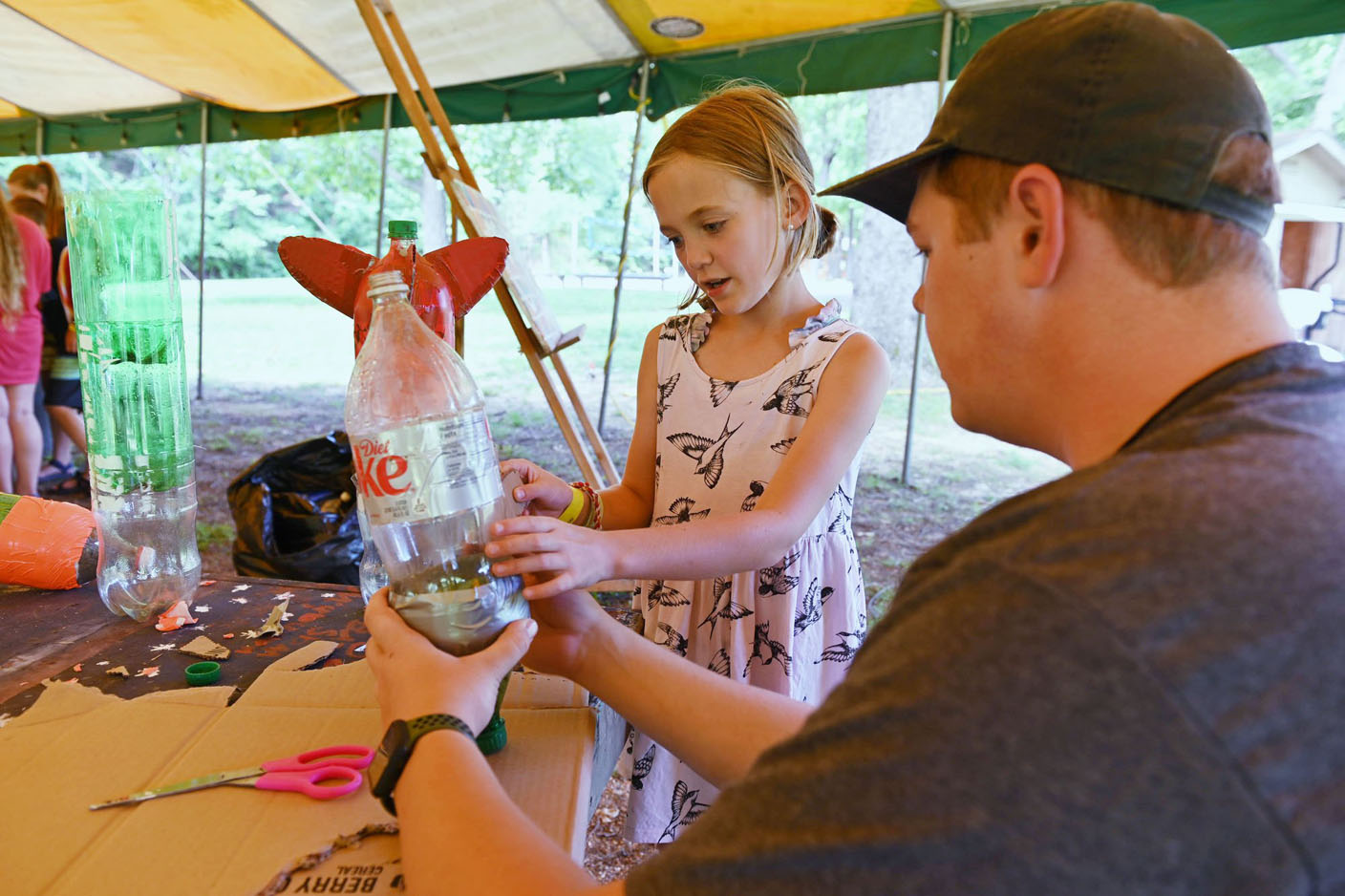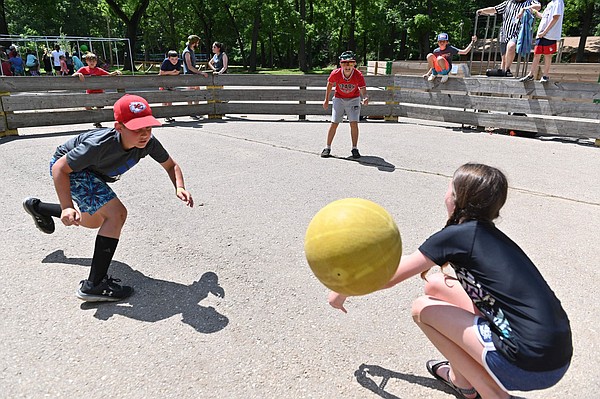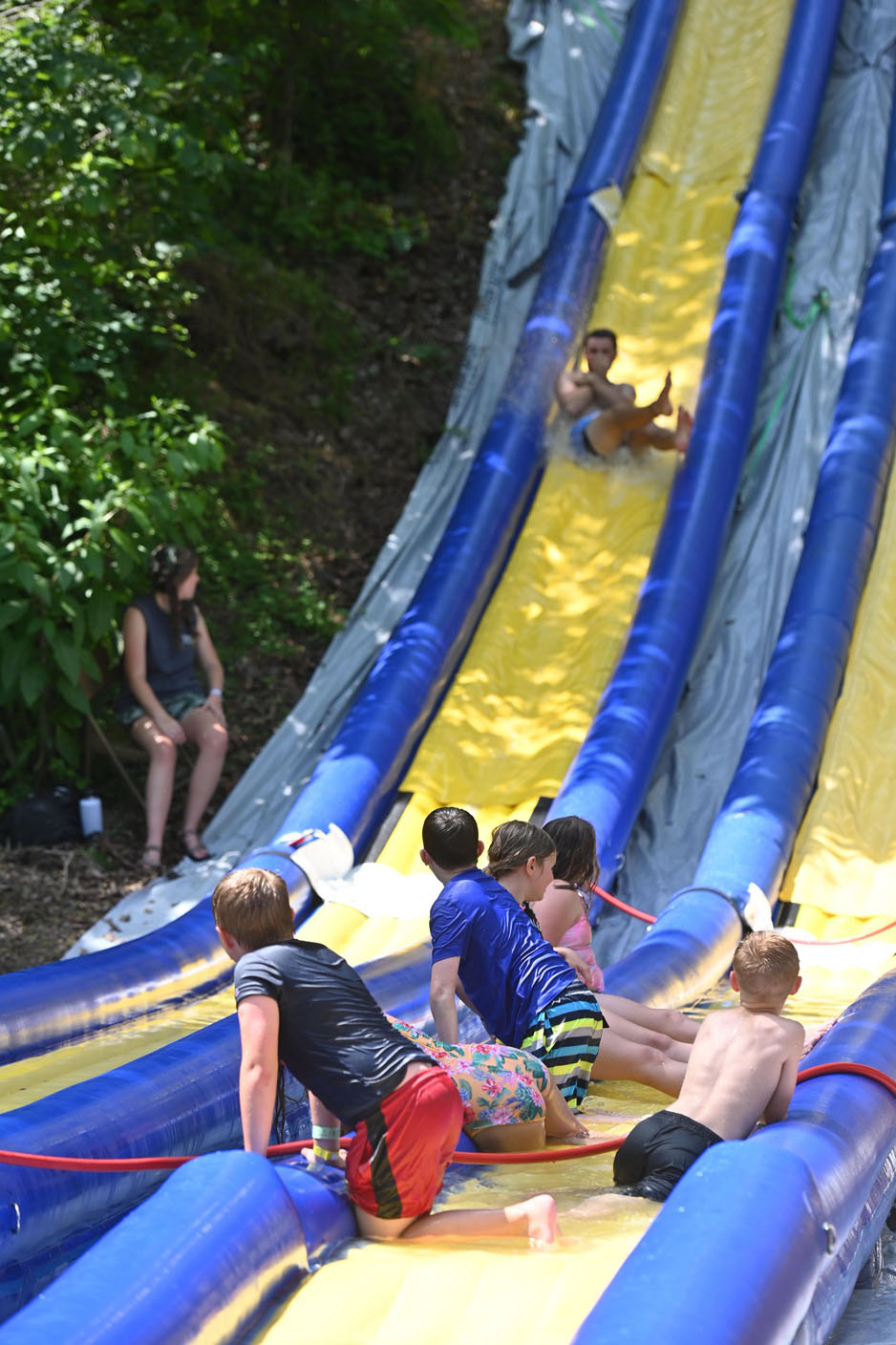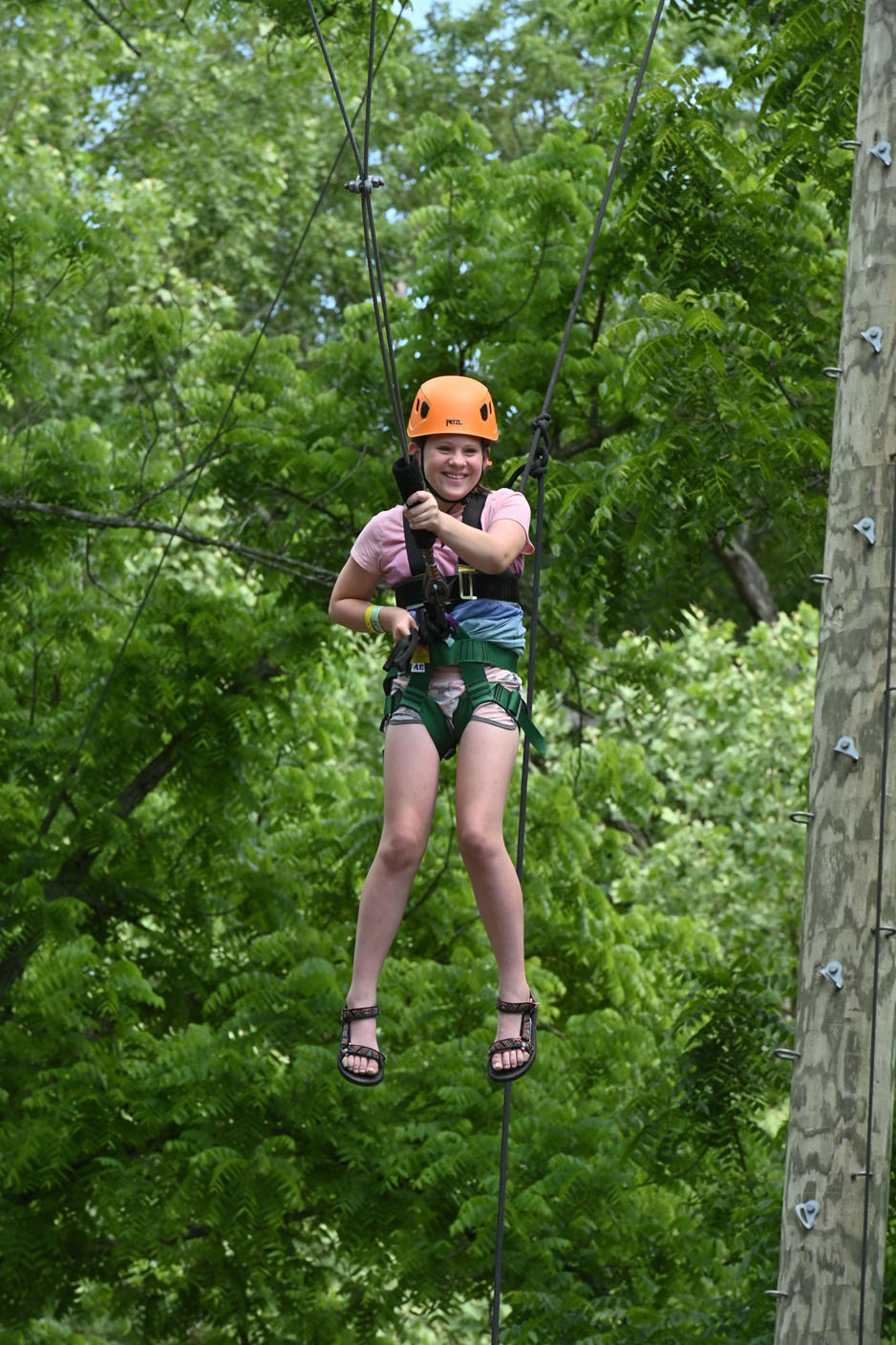Kids in Northwest Arkansas and across the country are returning to both day and overnight camps this summer that are starting to look more like they did before the pandemic.
Camps are offering more activities and serving more kids than in the past two years but are still facing challenges such as finding staff in a tight labor market, supply chain issues and inflation, camp directors said.
The pandemic brought about some beneficial changes such as more efficient check-in procedures, the use of technology for enrollment forms and enhanced handwashing and sanitation protocols that help prevent the spread of all communicable diseases.
Camp War Eagle closed its day camps throughout Northwest Arkansas in 2020 and operated overnight camps on Beaver Lake at a drastically limited capacity, according to Leslie Seaton, operating director. The camp required a negative covid test prior to attendance and modified many aspects of its programming to keep campers in smaller groups who moved through activities together to minimize transmission of covid-19, she said.
Summer 2021 offered a much more normal camper experience, including day camps, she said. The spike in the delta variant midsummer required some modifications with staff members, but the camper experience wasn’t affected, she said.
This year, most of the covid restrictions are lifted, and the requirements that remain are part of health and safety safeguards that are in place every summer, Seaton said.
The camp still hasn’t returned to pre-pandemic numbers of campers yet, which allows for smaller groups as administrators evaluate covid levels in the community, Seaton said. The camp expects about 6,000 campers in overnight and day camps this year, she said, compared to the 7,025 kids it hosted in 2019. It has about 400 seasonal staff members and 55 year-round employees, she said.
INDUSTRY IMPACT
When covid-19 hit in 2020, 82% of overnight camps and 40% of day camps across the country were unable to operate, according to Tom Rosenberg, president and CEO of the American Camp Association. As a result, 19.5 million children were unable to go to camp, 900,000 seasonal jobs were lost and the industry took a $16 billion hit, he said.
The nonprofit association provides support for more than 15,000 day and overnight camps nationwide. Before the pandemic, those camps served an estimated 26 million children and employed 1.2 million seasonal staff members each year, he said.
When the pandemic hit, the association hired an environmental health consulting firm and created an expert panel to develop a guide for camps to mitigate transmission of the virus, Rosenberg said. Each state is responsible for making public health decisions and not every state allowed camps to operate in 2020, he said.
The association worked with the federal Centers for Disease Control and Prevention to fine-tune the guidance in 2021, Rosenberg said. All 50 states allowed day and overnight camps last year.
Only seven state authorities are providing day camp guidance and 10 are providing overnight guidance this year, he said.
In Arkansas, there have been no restrictions or directives on camps since the end of summer 2020, according to Danyelle McNeill, public health officer for the Arkansas Department of Health. The department did offer guidance and recommendations in 2021, she said. This year, the department is referring camps to CDC guidance, which is similar to the guidance for K-12 schools.
CAMP EXPERIENCE
Camp Siloam is seeing a record number of campers this year and may exceed 6,000 kids by the end of the summer, according to director Jason Wilkie. The Arkansas Baptist Convention owns and operates the 99-year-old overnight camp in Siloam Springs.
“I think parents are anxious to let kids have that camp experience again, and kids are excited to get back to summer camp,” he said.
Camp was canceled in 2020 because the congregate living situation was too risky, Wilkie said. Churches bring groups to camp, along with supervising adults, and stay in bunkhouses, he said. The camp also has its own staff of 12 year-round employees along with 85 summer workers, who are mostly college students, he said.
Camp Siloam did have camp in 2021 with safety precautions in place, but numbers were down with about 4,200 kids, about 1,500 less than normal, he said. Some campers and staff members tested positive for covid-19, but the camp stayed open even though it had to send some groups home, he said.
“It was the hardest summer we’ve ever had, but yet we were still able to continue to do ministry,” Wilkie said.
New Life Ranch, which has locations in Colcord, Okla., Adair, Okla., and Russellville, has also seen the number of campers return to prepandemic levels, according to Executive Director Tom Graney.
New Life Ranch has more elementary-age campers than ever, but there has been a slight reduction in campers in the seventh- through 12th-grade age group, Graney said.
The camp operated at 45% capacity in 2020 by grouping campers into small cohorts and avoiding large gatherings at chapel and mealtimes, he said. The camp also developed health protocols and built large handwashing stations, which it plans to continue, he said.
This year, the camp is holding large group gatherings for meals, chapel and games, and is allowing parents to visit the last day, he said.
DAY CAMPS
Both day and overnight camps play a big role in the nation’s child care system, Rosenberg said.
The Rogers Activity Center served about 400 kids a day before the pandemic through its summer day camp program, according to Cody Steussy, assistant executive director. In 2020, the camp offered a very limited summer program and has been able to host 200 campers this year and last, he said.
The summer camp program is divided into week-long sessions, but many kids attend all summer, Steussy said. Kids in first through seventh grade spend up to 12 hours a day at camp. Their days include meals, games, activities, sports and field trips, he said.
During the pandemic, the camp divided activities by family groups instead of age group, did screenings each morning, required masks and did not go on field trips, Steussy said. This year is getting back to normal with field trips and expanded activities. The program is continuing many of the health practices it had in place before the pandemic, such as daily sanitizing and handwashing, he said.
Brightwater’s Future Chef Food Camps have been able to increase enrollment this year, according to Executive Director Marshall Shafkowitz. Brightwater is Northwest Arkansas Community College’s culinary school in Bentonville. It offers six, week-long day camp sessions for kids age 9 through 17.
Brightwater didn’t host any camps in 2020 and instead focused on feeding doctors, nurses and hospital staff, Shafkowitz said. It offered camp last year with reduced enrollment. This year, the program is expanding to serve 120 campers and dropping requirements such as masking, he said.
Brightwater learned to use technology to allow parents to fill out forms and check campers in more efficiently, Shafkowitz. The camp gave parents QR codes with links to online forms, which reduced contact between parents and staff, he said.
Kids spend time outside planting, cultivating and harvesting food in Brightwater’s gardens, then learn to use the ingredients in the kitchen, Shafkowitz said. It’s great to hear the clanging of pots and pans and the laughter of children in the kitchens, he said.
FINANCIAL IMPACT
Camp Acacia, a residential summer camp in Gentry for children and adults with special needs, was in its second year of operation when the pandemic struck, said Executive Director Rachel Smith. The camp wasn’t able to open in 2020 and ran at about 60% capacity with limited activities in 2021, she said.
The financial impact of the pandemic was awful, and the camp went 20 months without income, Smith said. Donors stepped up and helped the camp stay open, she said.
“We are very lucky Northwest Arkansas is such a generous community,” Smith said.
This year, Camp Acacia is opening with a full slate of programs and isn’t requiring as much masking since most of the staff is fully vaccinated, Smith said.
Since the camp serves a very high-risk population, it already had a lot of protocols for handwashing and sanitizing in place before the pandemic, Smith said. The camp had no cases of covid-19 last year and only one case of stomach flu and one cold, she said.
The biggest financial impacts for Camp War Eagle have been the increased costs for medical supplies, protective equipment and testing, Seaton said. The camp has also felt the impact of inflation in the cost of food and in other areas, she said.
The Rogers Activity Center has operated at a loss the past two years, but hopes this year will be better, Steussy said. Camp is an important service, and the center wants to continue offering it, he said.
Staffing is the biggest challenge Camp Siloam faces this year, Wilkie said. The camp still has five or six positions to fill, he said. A lack of staff has also limited the number of kids the Rogers Activity Center can serve, Steussy said.
“We would love to accept more kids,” Steussy said.
 Kenley Young works to build a Bottle Rocket with camp counselor Wesley Bridges Thursday, June 9, 2020, at Camp Siloam a Baptist summer camp in Siloam Springs. The bottle rockets uses water presser to fly which the kids laugh later on there last night at the camp. (NWA Democrat-Gazette/Spencer Tirey)
Kenley Young works to build a Bottle Rocket with camp counselor Wesley Bridges Thursday, June 9, 2020, at Camp Siloam a Baptist summer camp in Siloam Springs. The bottle rockets uses water presser to fly which the kids laugh later on there last night at the camp. (NWA Democrat-Gazette/Spencer Tirey)



